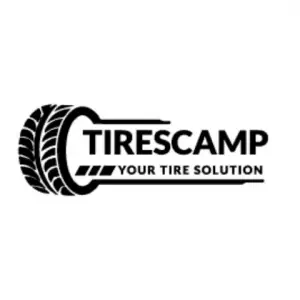If not entirely, the quality of your tires will mainly determine how safe your car performs. That is why getting the greatest one for your vehicle is advisable.
Choosing the best tires for your car can be a daunting undertaking. This is particularly true if you are unsure about the best tires for your vehicle.
To make it simpler for you to choose the best tires for your vehicle, we will compare 93V and 94V tires for you in this article.
93V vs 94V Tires: Quick Comparison
In the 93V vs 94V tire comparison, 93 and 94 represent the tires load index. The load index indicates a tire’s load carrying capacity. In other words, it’s the maximum weight your tire can safely support at maximum pressure.
In our situation, a 93V tire has a load index of 93 which means that, at the maximum air pressure, the tire can withstand 1433 pounds. To calculate the maximum loading capacity for your car, multiply this by four tires. Your vehicle, therefore, can support 5,732 pounds when fitted with these tires.
On the other hand, a 94V tire has a load index of 94, which indicates that it can support 1477 pounds. Your vehicle, therefore, can support 5,908 pounds when fitted with these tires.
Continuing with our comparison, the V in the 93V vs 94V tires indicates the tire’s speed rating. The speed rating shows the maximum speed the tire can safely maintain over time. A tire with a V speed rating can maintain an optimal speed of 149mph.
The table below summarizes the comparison between 93V vs 94V tires:
| Specifications | 93V Tires | 94V Tires |
| Load Index | 93 | 94 |
| Load Carrying Capacity | 1433 | 1477 |
| Speed Rating | V | V |
| Maximum Speed | 149mph | 149mph |
93V vs 94V: Which One Should You Buy?
If your primary concern is the speed rating, you can go with either of the tires. Both tires can ride at a maximum speed of 149mph safely.
However, if you are looking for tires that will help your car support much load, it is advisable to go for the 94V tires. These tires will help your car support a maximum load of 5,908 pounds when fully inflated.

What is the Tire Load Index?
Load Index or Tire Load Rating is a numerical code on the sidewall of a tire. It indicates the maximum load a tire can support when inflated to its maximum permissible cold pressure and under specific service conditions established by the manufacturer.
Along with the load index, the speed index is mentioned in the tire size designation or the tire’s service description. For instance, the “275/75R18 91V” tire size designation indicates that the tire can carry a maximum load of 1356 pounds and sustain a top speed of 149 mph.
What is the Importance of Load Rating and Weight Capacity
Your tires’ load rating or weight capacity is crucial to your vehicle’s safety. The weight your tires can support at optimal air pressure depends on the load rating. If you overlook load rating, tire failure may occur, leading to damage to your vehicle or an accident that might cause harm to you and your passengers.
You can find a tire’s maximum load rating by looking at your tire’s sidewall. To get your tire load rating requirement, divide your car’s heaviest axle weight rating by 2. The maximum weight each axle can support is the gross axle weight. Look for a label on the gas tank, driver’s side door jamb, glove box, or trunk lid to locate the axle weight rating. Your recommended tire size, load rating, and tire pressure are all listed on this label.
If a tire you are considering buying has a lower load index than your OEM wheels, avoid buying it. A tire cannot adequately support the weight of your vehicle, its occupants, and its equipment with a lower load rating. Additionally, it won’t be able to handle the force needed for emergency maneuvers. On the other hand, upgrading to a tire with a higher load rating is acceptable because it can carry more weight capacity safely.
Overloading a tire’s casing and construction can strain it, causing a failure. The tread edges can overheat from over flexing under heavy loads and begin to detach from the tire. The sidewall cords can also begin to unravel in warmer locations where the road absorbs heat. Even after the enormous load has been unloaded, the cords will likely continue deteriorating once they begin to unravel.
Consider switching to a truck or larger SUV if you frequently transport heavy loads and want to prevent weight capacity problems.
Frequently Asked Questions (FAQ)
Do Tires With the Same Load Index Carry the Same Load?
Regardless of tire size, tires with the same load index may or may not carry the same load and may require drastically different inflation pressures. Particularly when comparing P-metric and Euro-metric passenger car tires, an equal or higher load index does not always translate into an equal or higher load capacity at all inflation pressure levels.
Is a Higher Load Index Better?
The load index is a two- or three-digit figure representing a tire’s capacity to carry. The greater the number, the more weight the wheel can support. In contrast, the quantity that the wheel can take decreases as the number decreases.
Does Load Index Impact Your Ride Quality?
Tire load ratings impact your vehicle’s performance, mainly if you haul or tow anything like cargo, commodities, boats, trailers, etc. Even though your tires are sturdy, the weight of your car plus the item you’re towing exerts additional strain on them, which could result in a blowout or premature tire degradation.
Can You use Tires with a Higher Load Index?
You can upgrade to a tire with a higher load index if you’re considering going up because that only implies your tire can handle more weight securely. However, going for tires with a lower loading index is not okay.
Final Take
We hope this article has given you all you need to know about the 93V and 94V tires. However, selecting the best one for your car depends on your preference and taste.
